The cave of Paleolithic shamans dancers and acrobats
Palermo, Italy
Prehistoric rock art encompasses a series of artistic expressions (engravings, impressions, or paintings) created inside caves or rock shelters, or on outdoor rock surfaces.
Engravings represent the oldest examples of prehistoric art. In the absence of metal, the tools initially used for carving these markings were particularly hard stones; later, sharpened stone or bone tools were employed, which likely also served to incise figures onto living rock or clayey cave walls.
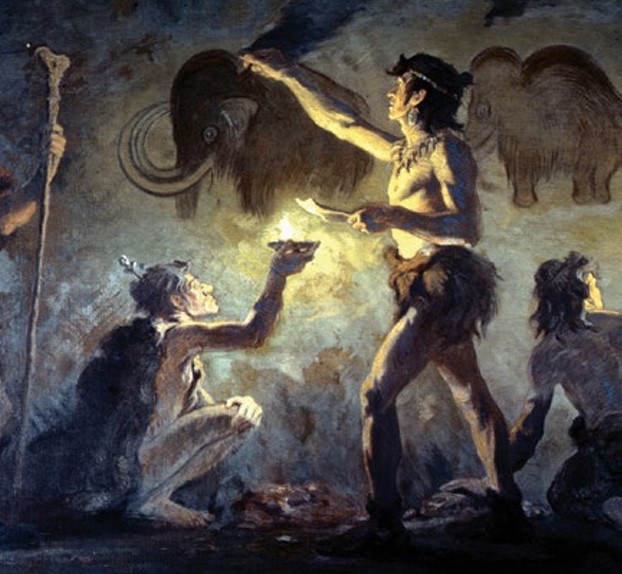
Paleolithic men paint inside a cave
The incision was sometimes followed by filling the groove with black pigment. Prehistoric people sourced their colors naturally from readily available materials in their environment. Black pigment, for instance, was derived from charcoal or soot. They applied it directly with their fingers onto the cave walls or mixed it with animal fats or vegetable/animal oils to create a paint. This pigment mixture was then spread using rudimentary brushes, often made from animal fur.
Some renowned examples of caves featuring famous rock engravings include Addaura (Palermo), Romanelli (Lecce), and Genovesi (Levanzo).
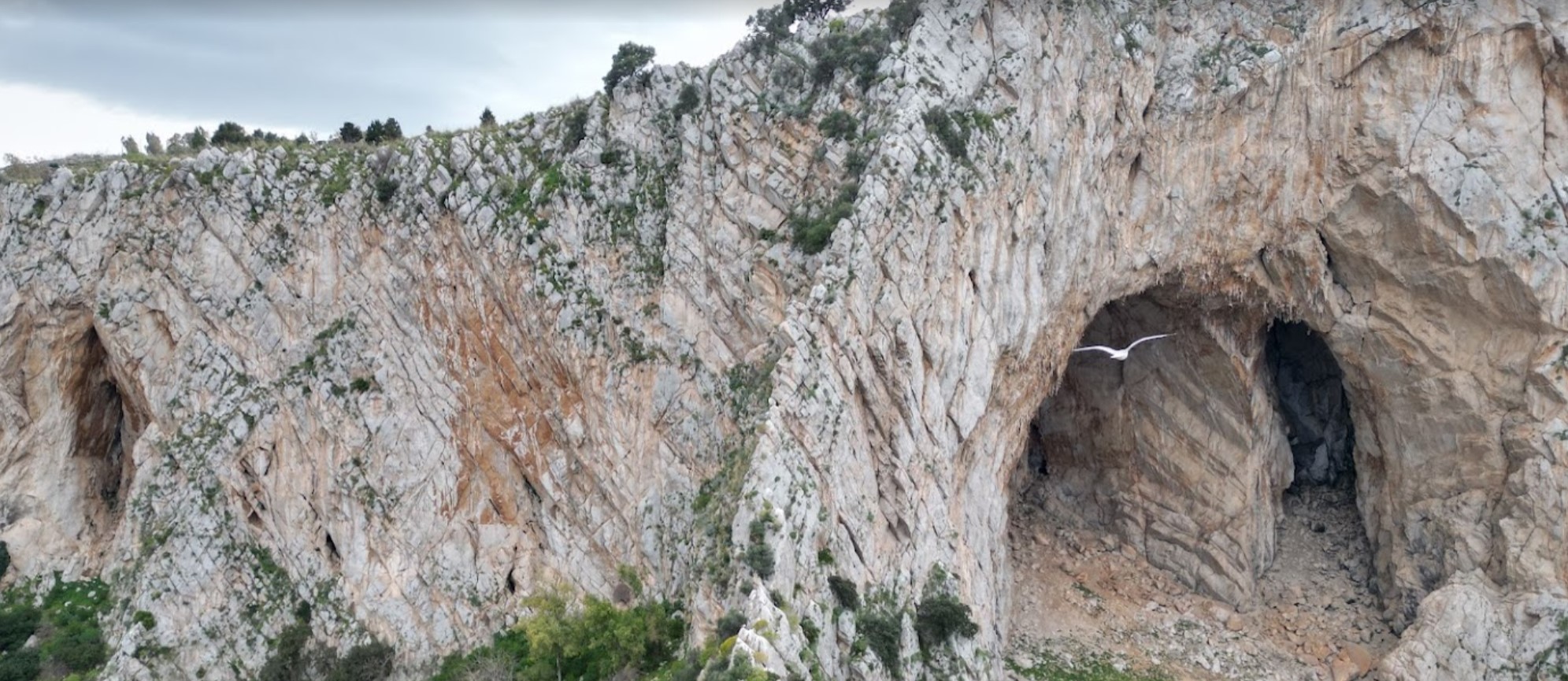
Addaura Caves, Palermo.
Addaura is a coastal village of Palermo. Historical evidence suggests that around the 13th century, the territory was a fiefdom of the Church, and the caves served as a place of spiritual retreat for hermit monks. Indeed, the oldest documented mention of the locality appears in a declaratio by Charles I of Anjou dated August 20, 1270. In this document, the area is referred to by the ancient name Daura and designated as a hunting reserve for the Royal Curia. The term daura may be a corruption of the Greek word laura, which denotes a community of religious individuals living a solitary life in groups of cells formed by small huts or caves, separated from each other. Supporting this, the discovery of ceramic fragments dating from the Middle Ages and the Renaissance in numerous caves and small cavities along the rocky cliff base where the hamlet is situated confirms that this locality hosted communities of hermits in the past. Therefore, it is probable that the place name "Daura" refers to this monastic order prevalent when the area was still a church-owned fiefdom, rather than deriving from laurus (Laurus nobilis, the laurel plant) as proposed by some scholars. By the end of the 16th century, a notarial deed refers to the former estate as Alaura, later transformed into Allaura, and finally Sicilianized into Addaura. According to philologist Alberto Varvaro, the term Addaura derives from the Arabic word Id-dawra, meaning "the circuit."
The earliest evidence of human settlement in the Addaura area dates back to the Paleolithic era, when several prehistoric tribes of hunters colonized the caves of Monte Pellegrino. These caves form a complex of natural cavities overlooking the sea, originating from marine erosion. Some served dual purposes as dwellings and burial sites. Burials were conducted in pits dug into the earth, often bordered by stones; the deceased was interred with a modest set of ornamental objects, primarily pierced shells and animal teeth.
As environmental changes occurred – characterized by rising average global temperatures, shifts in flora and fauna, and a consequent rise in sea levels reducing the land area – the hunter-gatherers adapted. They learned to cultivate the land and exert control over certain animal species. The complex of caves, enlarged by water erosion, was reoccupied and exploited primarily during winter months for fishing and gathering terrestrial and marine mollusks, while hunting took place inland during summer. The artistic representations discovered in the Addaura Cave (also known as the Cave of Engravings or Grotta delle Incisioni), potentially used as a place of worship, can be attributed to this historical phase.
Since the late 19th century, the locality has been the site of significant paleontological discoveries, such as the skeleton of a dwarf elephant, less than one meter tall, which was widespread in Sicily between 500,000 and 120,000 years ago. This discovery garnered considerable attention in the international scientific community and sparked a lasting campaign of excavations and explorations that quickly extended to the nearby promontories.
During the Second World War, the site was utilized as a military arsenal by the German army. The presence of unexploded ordnance hindered the complete exploration of the cave complex during archaeological investigations conducted between 1946 and 1947. An explosion occurred a few years later – deemed accidental by some accounts or a controlled detonation by Allied military authorities according to others – which damaged a large portion of the mountainside. However, this event also had the effect of revealing the previously inaccessible Cave of Engravings. Some time after the explosion, rock concretions broke away, exposing the engravings. These graffiti gained international renown in the early 1950s.
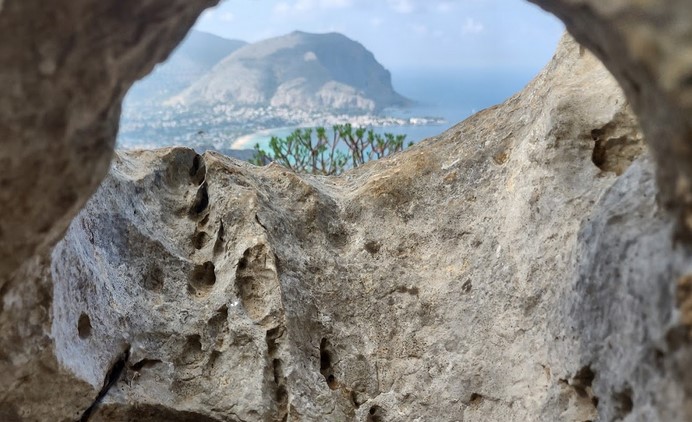
View of Mount Pellegrino from Addaura Caves, Palermo
The Cave of Engravings is relatively small and well-lit by external light. The Addaura engravings constitute a figurative cycle of exceptional interest due to the unusual attention dedicated to representing the surrounding scenery – an extreme rarity in all of Paleolithic art. Almost all the cave walls are covered with rock engravings (zoomorphic and anthropomorphic figures), but the most famous are located on the left wall. Men and animals are depicted in multiple scenes capturing two distinct moments of the same event: the sacrifice of a boy lying prone and bound with ropes.
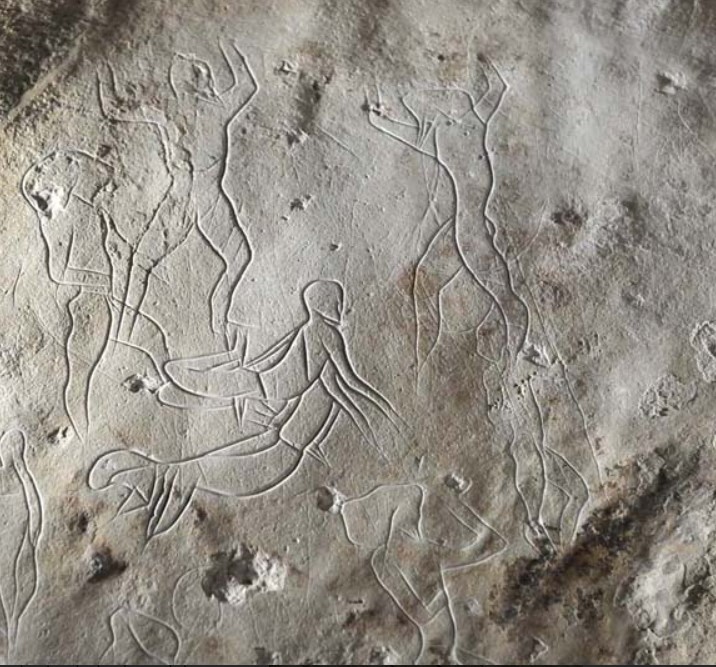
A detail of the Paleolithical engravings show in a cave of Addaura III., Palermo (ph. Vassallo, RM Cuco, 2015).
The engravings are dated to approximately 12,000 years ago. Over time, many were deliberately erased by Paleolithic people to superimpose new carvings. The most ancient incisions can be distinguished by their deeper grooves.
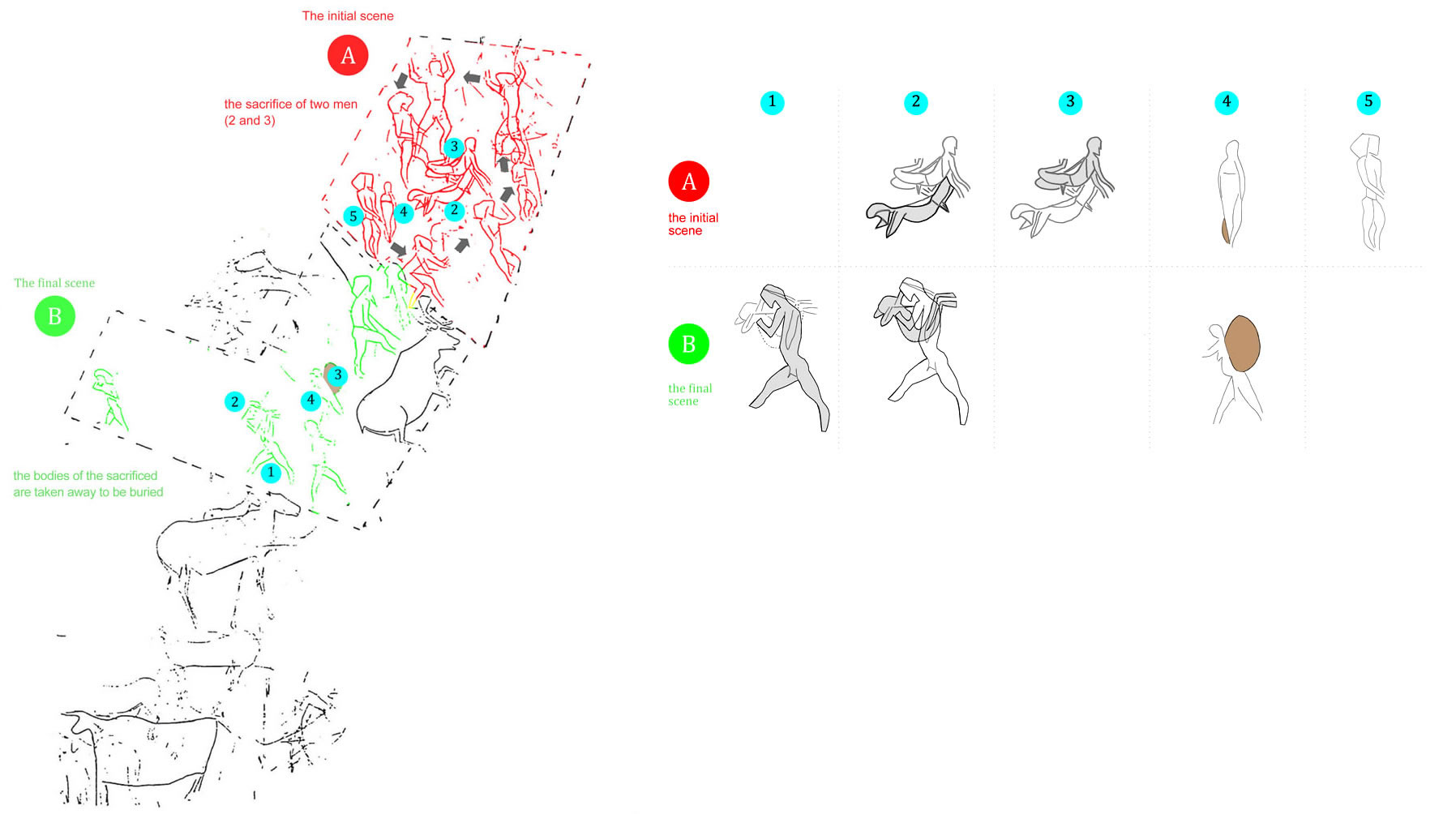
A reproduction of the carvings in the stone walls of the Addaura Cave III. (ph. G. Bolzoni, 1985)
• Initial scene (top right): A boy lies bound on the ground. A shaman dances near him (the boy may be experiencing seizures). A pregnant woman (4A) observes, holding an empty bag.
• Final scene (bottom left): A man (1B) carries the sacrificed boy’s body (2B) for burial, bound by ropes to his forehead. The woman (4B) now carries a full bag—possibly containing a second sacrificed figure (3A).
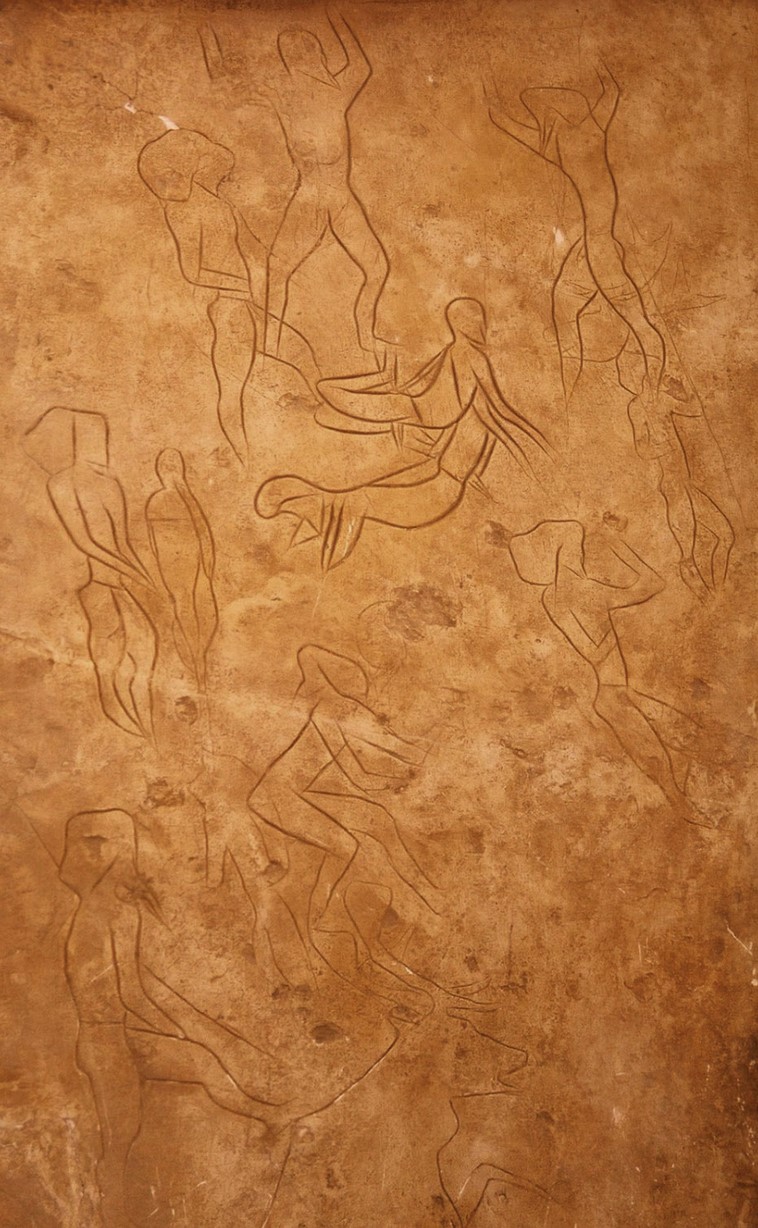
A reproduction of the paleolithical engravings in a cave of Addaura shown in the Museo Regionale Archeologico in Palermo.
Lungomare Cristoforo Colombo, 3870 (Palermo)
